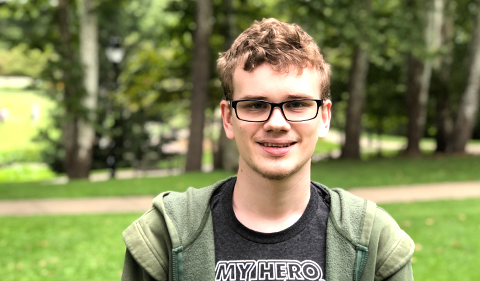Editor’s Note: The MOLLER experiment (Measurement of a Lepton-Lepton Electroweak Reaction) at Jefferson National Laboratory (JLab) proposes to measure the parity-violating asymmetry in electron-electron (Møller) scattering. The experiment will rapidly flip the longitudinal polarization of the electron beam, and measure the fractional difference in scattering rate of the beam electrons from the atomic electrons in a liquid hydrogen target. The scattering rate will also depend upon small changes in the beam properties, requiring corrections to the measured rates based on measured beam properties.
MOLLER is a future experiment, more than three years out, so there are not any actual pictures yet; but there are some conceptual pictures. There are around 30-35 institutions participating with about 100 researchers who have signed the proposals. Since the experiment is still far in the future, the number of students is not well defined, but there are probably 20+ students (graduate and undergraduate) at various institutions which have been working on aspects of the project planning over the past year. Michael’s project was to include routines in the analysis framework to determine the correlations between detector and beam monitor signals, and to use those correlations to correct the detector signals.
I worked with Dr. Paul King in Physics & Astronomy during the summer of 2018 on the code for the MOLLER experiment. My own experiment was about integrating linear regression functionality into the data collection code for the MOLLER experiment. I didn’t directly integrate the functionality into the current version of the code, but instead integrated it into QwAnalysis (the program for the Qweak experiment), because the existing linear regression program was designed for QwAnalysis. From there, the code was merged with an early version of the data collection code for the MOLLER experiment.
During this internship I learned about the MOLLER experiment itself, along with gaining general coding experience in C++. I learned what goes into designing a large-scale coding project.
A challenge I had to overcome in this project was figuring out what the existing code was doing. The program has been worked on for 11 years, and as such contains many files that all have specific functions. I eventually learned what the applicable files to my work were doing by simply by working with the files for several weeks. I worked with Dr. King daily. I would go up to his office to inquire about my work on average three times a day.
The MOLLER experiment intrigues me because of the nature of the equipment involved in the experiment. The accelerator and the target are very impressive and I am interested in how they work. I didn’t work on site at JLab, but I did get to visit the lab. A highlight in my work was seeing the program do what it was supposed to do after working on it for several days.
For a student about to work on the code, I would say that after working with the code for a few weeks, it becomes easier to understand. It is a bit overwhelming at first due to how much code there is, but once you narrow in on what you need to work with, it becomes clearer what is happening.




















Comments